Topics
Category
Era
Cherokee Park, St. Paul
Cherokee Park, located in the West Side neighborhood of St. Paul, is a regional park comprising 100 acres of forested bluff and blufftop parklands along the Mississippi River. The St. Paul Park Board first established a ten-acre section of the park in 1905 near the High Bridge, with subsequent expansions in 1906, the 1910s, and the 1970s. The park is well known for its spectacular view of the Mississippi River Valley, and of both downtown St. Paul and Minneapolis.
Situated on a high bluff along the western bank of the Mississippi River, Cherokee Park sits amid a landscape of Dakota sacred sites, including Bdote (the confluence of the Mississippi and Minnesota Rivers) and Wakan Tipi (Carver’s Cave). For thousands of years, the area’s proximity to the river, floodplains, Pickerel Lake, and upland bluffs offered a variety of resources for Indigenous inhabitants of the area. In 1851, the Treaty of Mendota resulted in the Dakota transferring a vast swath of land to the United States government, including the area that is now Cherokee Park. The United States government has yet to deliver much of the promised payment under the treaty. By the mid-1850s, the area that is now Cherokee Park was owned by various private citizens.
By the 1890s, the land that is currently Cherokee Park was platted, with streets and homes planned for the area. Some homes and other structures had already been built on the current parkland. Nevertheless, the St. Paul Park Board was eager to use this land for a public boulevard, which was proposed to begin around the intersection of Cesar Chavez Street and Isabel Street West, head along the bluff toward the High Bridge, and then stretch another four miles to the town of Mendota. The Park Board had difficulty in securing this land, as it was all already privately owned.
In 1905, however, donations of land and money from West Side residents resulted in a ten-acre section of land east of the High Bridge being designated as a park, which was called the West Side Boulevard. In 1906, a subsequent monetary donation made by James J. Hill enabled another nine-acre expansion of the park to the west of the High Bridge. The Park Board acquired the southern portion of the park in 1915, and around this time the park was renamed Cherokee Heights Park. Beyond grading a dirt road, few park “improvements” were made during these years.
The 1920s marked the beginning of more extensive development in the park, including a widened and paved road, and construction of recreational facilities such as horseshoe, tennis, and kitten-ball courts. In 1920, a municipal tourist campground was established that hosted approximately 10,000 travelers each summer. Facilities at the campground included tables, permanent stoves, water, lights, a pavilion, and a bathhouse with hot showers. The campground was initially located along Chippewa Avenue. After a few years, the campground was moved to the western boundary of the park, away from the residential area and neighbors who considered it an eyesore.
The campground was shuttered in the early 1930s, and the park became a popular destination for picnics. In the following decades, the park hosted band concerts, an ice-skating rink, a toboggan slide, community sings, horseshoe and tennis leagues, annual West Side Fourth of July celebrations, and countless community and family gatherings.
In the late 1960s, several development projects were proposed in the vicinity of the park. The St. Paul Port Authority attempted to purchase fifty acres of land adjacent to the park owned by the Twin Cities Brick Company with the goal of establishing an industrial zone and scrapyard. This plan was ultimately rejected, and twenty-five acres of the Twin Cities Brick Company land along the bluff were eventually incorporated into Cherokee Park. Around this time, a private company presented an offer to lease a portion of the bluff within the park for a ski-racing run. This plan was dismissed due to overwhelming community opposition.
In the early twenty-first century, park managers made efforts to restore native vegetation and increase accessibility to picnic facilities. In 2024, the spectacular views that first inspired the St. Paul Park Board to establish this area as public land continue to be enjoyed by park visitors.
Bibliography
2F G 4144 .S4G52 1929 .S2
Map Collection, Minnesota Historical Society, St. Paul
https://mnpals-mhs.primo.exlibrisgroup.com/permalink/01MNPALS_MHS/ge68j0/alma990016915870104294
Description: Map of the St. Paul Park System, 1929.
Board of Park Commissioners of the City of Saint Paul. Annual Reports of the Board of Park Commissioners of the City of Saint Paul, 1888–1914. Available at the Minnesota Historical Society library as SB482.M62 S313.
Board of Park Commissioners of the City of Saint Paul. Park Board Records, 1887–ca. 1943
Manuscripts Collection, Minnesota Historical Society, St. Paul
Description: Meeting minutes and indexes, journals, ledgers, and park programs.
www2.mnhs.org/library/findaids/gr00518.xml
“Boulevard on the Bluff.” Broad Axe, September 9, 1897.
“Cherokee Park Ski Run Gets Icy Reception.” St. Paul Pioneer Press, July 18, 1973.
“City Tourist Camp Will Open May 15.” St. Paul Daily News, May 4, 1930.
Department of Parks, Playgrounds and Public Buildings of the City of Saint Paul. Report of the Department of Parks, Playgrounds and Public Buildings of the City of Saint Paul, 1916, 1917, 1918, 1919 & 1930. Available at the Minnesota Historical Society library as SB482.M62 S3132.
G 4144 .S4G52 1907 6F
Map Collection, Minnesota Historical Society, St. Paul
Description: Park and Parkway System, City of St. Paul, Minn, 1907.
https://mnpals-mhs.primo.exlibrisgroup.com/permalink/01MNPALS_MHS/ge68j0/alma990016079770104294
Peabody, Lloyd. History of the Parks and Public Grounds of St. Paul. St. Paul: Minnesota Historical Society, 1915. Available at the Minnesota Historical Society library as F602 .M61 v.15.
“Picnic Shelter Gift for Cherokee Park.” St Paul Dispatch, February 4, 1969.
Saint Paul Playground Committee. Annual Report of the St. Paul Playground Committee, 1904–1937. Available at the Minnesota Historical Society Library as SB482.M62 S3133.
Saint Paul Recreation Department. Annual Report of Recreational Activities, 1938–1963. St. Paul Collection, St. Paul Central Library.
"Ten Thousand Lakes Secretary Endorses Paid Tourist Camps." Sauk Centre Herald, December 16, 1926.
https://www.mnhs.org/newspapers/lccn/sn89064489/1926-12-16/ed-1/seq-2
Related Resources
Primary
League of Minnesota Municipalities. Management and Control of Tourist Camps in Minnesota, 1926. Available at the Minnesota Historical Society Library as TX916.M6 L4.
Minnesota Historical Aerial Photographs
John R. Borchert Map Library, Minneapolis
Description: Aerial photos of St. Paul taken in 1923, 1937, 1945, 1953, and 1964.
https://apps.lib.umn.edu/mhapo
Secondary
Anfinson, John O. River of History: A Historic Resources Study of the Mississippi National River and Recreation Area. National Park Service, 2003.
https://www.nps.gov/miss/learn/historyculture/historic_resources.htm
Barnd, Natchee Blu. Native Space: Geographies to Unsettle Settler Colonialism. Corvallis, OR: Oregon State University Press, 2017.
Belasco, Warren James. Americans on the Road: From Autocamp to Motel, 1910–1945. Baltimore: Johns Hopkins University Press, 1997.
Cranz, Galen. The Politics of Park Design: A History of Urban Parks in America. Cambridge, MA: MIT Press, 1989.
Mead and Hunt, Inc. Saint Paul Historic Context Study: Neighborhoods at the Edge of a Walking City. Prepared for Historic Saint Paul, City of Saint Paul Heritage Preservation Commission, and Ramsey County Historical Society, 2011.
https://www.stpaul.gov/sites/default/files/2022-08/2011%20Neighborhoods%20at%20the%20Edge%20of%20the%20Walking%20City.pdf
Minnesota Department of Transportation. St. Paul's High Bridge 1889–1985: A Photo-Essay of the History of a St. Paul Landmark, 1985.
https://www.leg.mn.gov/docs/pre2003/other/851419.pdf
Nunnally, Patrick. “Layers in the Landscape: A Floodplain Forest and the People Who Have Inhabited It.” Open Rivers 24 (2023): 32–57.
https://openrivers.lib.umn.edu/article/layers-in-the-landscape
Westerman, Gwen, and Bruce White. Mni Sota Makoce: The Land of the Dakota. St. Paul: Minnesota Historical Society Press, 2012.
Zellie, Carole, and Amy Lucas. Historic Resources Evaluation for the Northern Portion of Saint Paul’s Grand Round. Prepared for the City of Saint Paul, 2016.
https://www.stpaul.gov/sites/default/files/Media%20Root/Parks%20&%20Recreation/ST__PAUL_GR_ROUND_Historic.pdf
Zellie, Carole, and Garneth O. Peterson. St Paul Historic Context Study: Residential Real Estate Development: 1880–1950. Prepared for the St. Paul Heritage Preservation Commission, 2001.
https://www.stpaul.gov/sites/default/files/2022-08/2001%20Context%20Study%20-%20Real%20Estate%20Development.pdf
Web
Bergin, Daniel. “When ‘10,000 Voices Rang Out As One’ in Minnesota.” TPT Originals blog, May 12, 2020.
http://tptoriginals.org/when-10000-voices-rang-out-as-one-in-minnesota
McCormack, Eileen. “Cherokee Park: James J. Hill's Gift to Saint Paul.” Personal blog, August 1, 2016.
www.eileenmccormack.com/2016/08/01/cherokee-park-james-j-hills-gift-to-saint-paul
Minnesota Historical Society. Historic Fort Snelling. Bdote.
www.mnhs.org/fortsnelling/learn/bdote
Mississippi River and National Recreation Area, National Park Service. "The Brickyards of St. Paul."
www.nps.gov/miss/planyourvisit/brickyards.htm
Wakan Tipi Awanyankapi. Wakan Tipi (Bruce Vento Nature Sanctuary).
www.wakantipi.org/bruce-vento-nature-sanctuary
Related Images
.jpg)
Sign at the entrance of Cherokee Regional Park
Articles
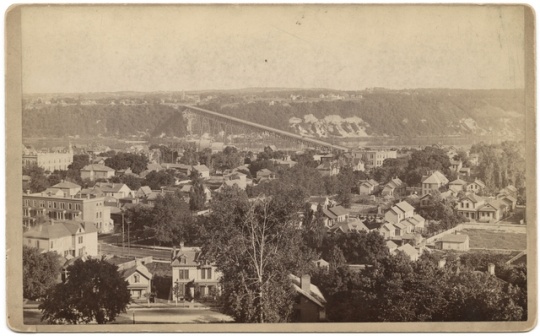
West Seventh Street neighborhood
Holding Location
Articles
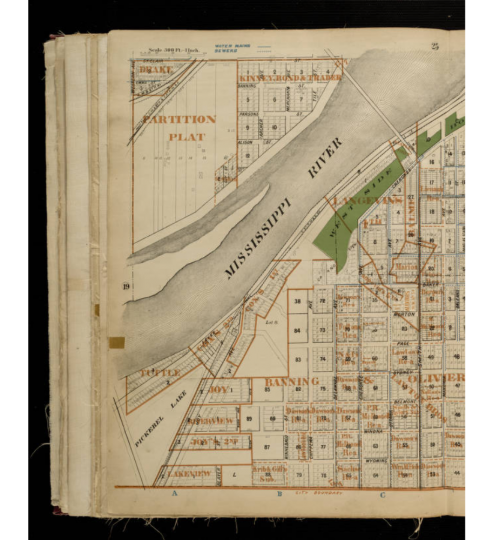
Map of the area around Cherokee Park, 1908
Holding Location
Articles
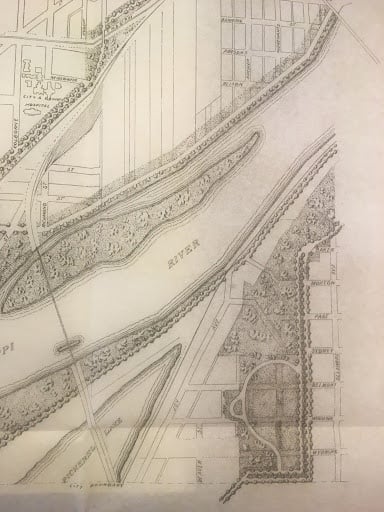
Map of the area around Cherokee Park, 1911
Map in 21st Annual Report of the Board of Park Commissioners of St Paul, MN, 1911. Available at the Minnesota Historical Society library as SB482.M62 S313 1904–1913.
Holding Location
Articles
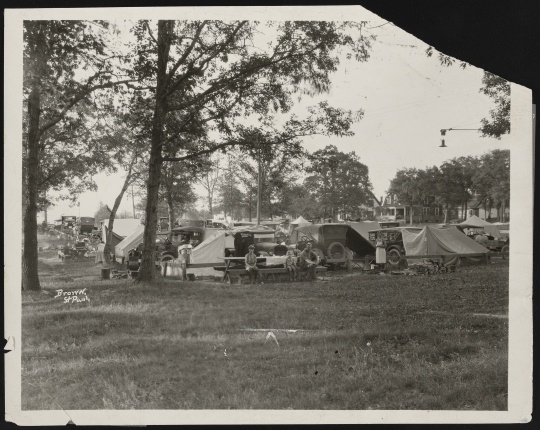
Campers at Cherokee Tourist Camp, 1923
Campers at Cherokee Tourist Camp, 1923. Photograph by the St. Paul Daily News.
Holding Location
Articles
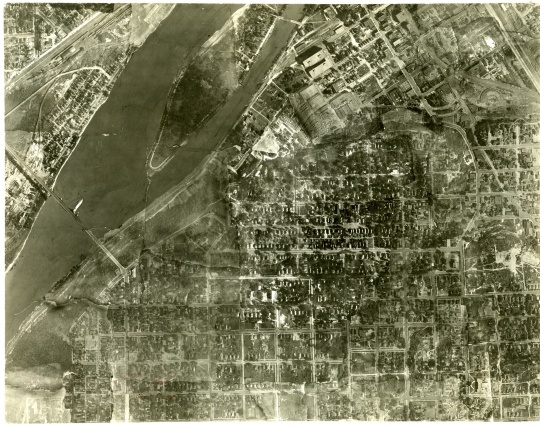
Mississippi River southwest of downtown St. Paul, 1923
Holding Location
Articles
More Information
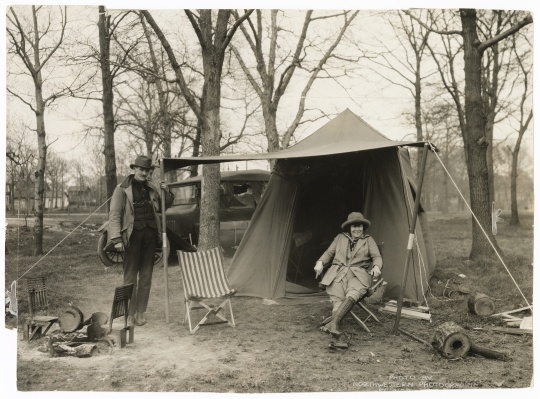
Camp site at Cherokee Park, 1924
Holding Location
Articles
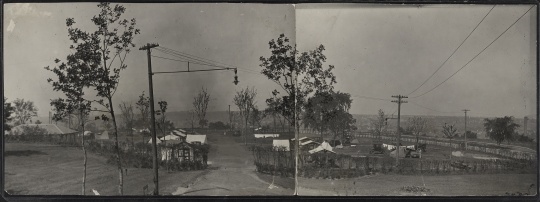
Cherokee Heights tourist camp panorama, ca. 1925
Holding Location
Articles

View of Mississippi River from Cherokee Heights, 1925
Holding Location
Articles
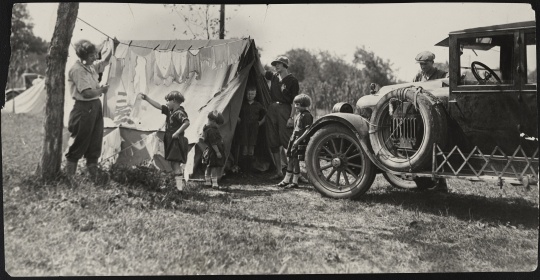
Campers washing clothing at Cherokee Heights tourist camp
Campers washing clothing at Cherokee Heights tourist camp, St. Paul, 1925. Photograph by the St. Paul News.
Holding Location
Articles
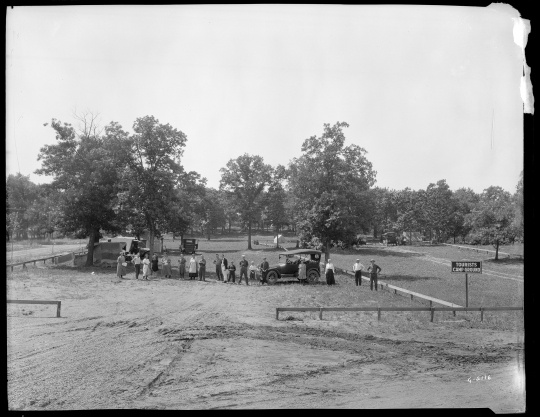
Cherokee Heights tourist camp, St. Paul, ca. 1925
Holding Location
Articles
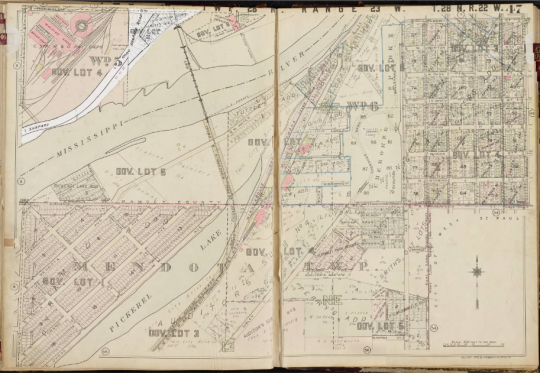
Plat map of Cherokee Park, 1928
Holding Location
Articles
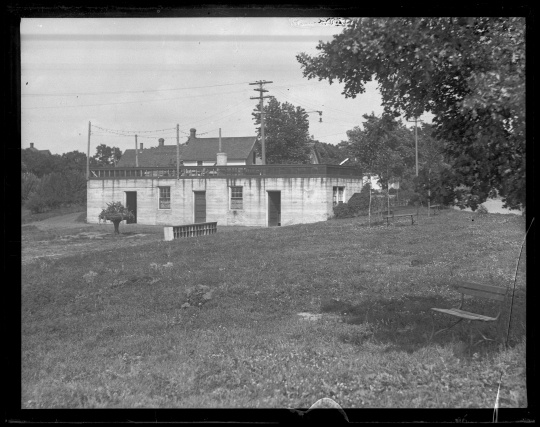
Cherokee Heights tourist camp bathhouse, ca. 1930
Holding Location
Articles
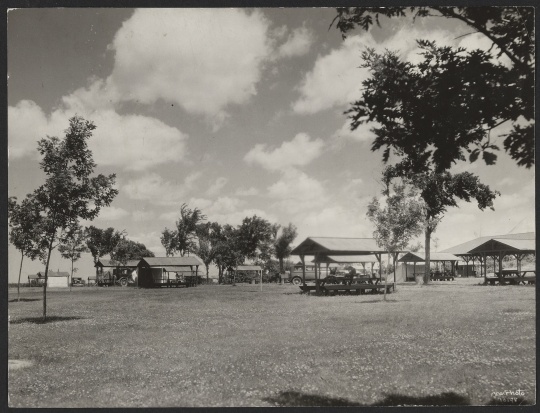
Cherokee Park picnic area, ca. 1935
Holding Location
Articles
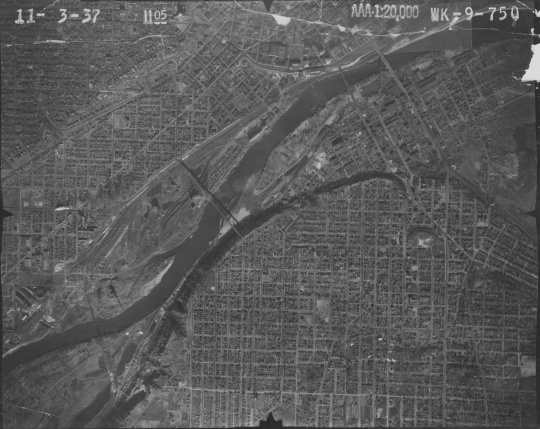
Mississippi River southwest of downtown St. Paul, 1937
Holding Location
Articles
More Information
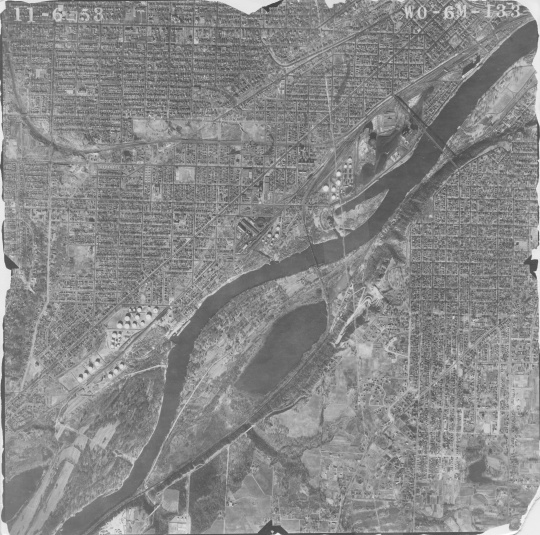
Mississippi River southwest of downtown St. Paul, 1953
Holding Location
Articles
More Information
.jpg)
View of downtown St. Paul from Cherokee Regional Park
Articles
.jpg)
Trees in Cherokee Park
Articles
Related Articles
Turning Point
In 1905, efforts by a group of West Side residents enable the St. Paul Park Board to purchase the first portion of the West Side Boulevard (which later became known as Cherokee Park). The land is situated on a high bluff of the Mississippi River, with outstanding views of downtown St. Paul and the expanding city.
Chronology
1851
1905
1906
1915
1921
1925
1931/1932
1950s
1967
1972
1973
2013
Bibliography
2F G 4144 .S4G52 1929 .S2
Map Collection, Minnesota Historical Society, St. Paul
https://mnpals-mhs.primo.exlibrisgroup.com/permalink/01MNPALS_MHS/ge68j0/alma990016915870104294
Description: Map of the St. Paul Park System, 1929.
Board of Park Commissioners of the City of Saint Paul. Annual Reports of the Board of Park Commissioners of the City of Saint Paul, 1888–1914. Available at the Minnesota Historical Society library as SB482.M62 S313.
Board of Park Commissioners of the City of Saint Paul. Park Board Records, 1887–ca. 1943
Manuscripts Collection, Minnesota Historical Society, St. Paul
Description: Meeting minutes and indexes, journals, ledgers, and park programs.
www2.mnhs.org/library/findaids/gr00518.xml
“Boulevard on the Bluff.” Broad Axe, September 9, 1897.
“Cherokee Park Ski Run Gets Icy Reception.” St. Paul Pioneer Press, July 18, 1973.
“City Tourist Camp Will Open May 15.” St. Paul Daily News, May 4, 1930.
Department of Parks, Playgrounds and Public Buildings of the City of Saint Paul. Report of the Department of Parks, Playgrounds and Public Buildings of the City of Saint Paul, 1916, 1917, 1918, 1919 & 1930. Available at the Minnesota Historical Society library as SB482.M62 S3132.
G 4144 .S4G52 1907 6F
Map Collection, Minnesota Historical Society, St. Paul
Description: Park and Parkway System, City of St. Paul, Minn, 1907.
https://mnpals-mhs.primo.exlibrisgroup.com/permalink/01MNPALS_MHS/ge68j0/alma990016079770104294
Peabody, Lloyd. History of the Parks and Public Grounds of St. Paul. St. Paul: Minnesota Historical Society, 1915. Available at the Minnesota Historical Society library as F602 .M61 v.15.
“Picnic Shelter Gift for Cherokee Park.” St Paul Dispatch, February 4, 1969.
Saint Paul Playground Committee. Annual Report of the St. Paul Playground Committee, 1904–1937. Available at the Minnesota Historical Society Library as SB482.M62 S3133.
Saint Paul Recreation Department. Annual Report of Recreational Activities, 1938–1963. St. Paul Collection, St. Paul Central Library.
"Ten Thousand Lakes Secretary Endorses Paid Tourist Camps." Sauk Centre Herald, December 16, 1926.
https://www.mnhs.org/newspapers/lccn/sn89064489/1926-12-16/ed-1/seq-2
Related Resources
Primary
League of Minnesota Municipalities. Management and Control of Tourist Camps in Minnesota, 1926. Available at the Minnesota Historical Society Library as TX916.M6 L4.
Minnesota Historical Aerial Photographs
John R. Borchert Map Library, Minneapolis
Description: Aerial photos of St. Paul taken in 1923, 1937, 1945, 1953, and 1964.
https://apps.lib.umn.edu/mhapo
Secondary
Anfinson, John O. River of History: A Historic Resources Study of the Mississippi National River and Recreation Area. National Park Service, 2003.
https://www.nps.gov/miss/learn/historyculture/historic_resources.htm
Barnd, Natchee Blu. Native Space: Geographies to Unsettle Settler Colonialism. Corvallis, OR: Oregon State University Press, 2017.
Belasco, Warren James. Americans on the Road: From Autocamp to Motel, 1910–1945. Baltimore: Johns Hopkins University Press, 1997.
Cranz, Galen. The Politics of Park Design: A History of Urban Parks in America. Cambridge, MA: MIT Press, 1989.
Mead and Hunt, Inc. Saint Paul Historic Context Study: Neighborhoods at the Edge of a Walking City. Prepared for Historic Saint Paul, City of Saint Paul Heritage Preservation Commission, and Ramsey County Historical Society, 2011.
https://www.stpaul.gov/sites/default/files/2022-08/2011%20Neighborhoods%20at%20the%20Edge%20of%20the%20Walking%20City.pdf
Minnesota Department of Transportation. St. Paul's High Bridge 1889–1985: A Photo-Essay of the History of a St. Paul Landmark, 1985.
https://www.leg.mn.gov/docs/pre2003/other/851419.pdf
Nunnally, Patrick. “Layers in the Landscape: A Floodplain Forest and the People Who Have Inhabited It.” Open Rivers 24 (2023): 32–57.
https://openrivers.lib.umn.edu/article/layers-in-the-landscape
Westerman, Gwen, and Bruce White. Mni Sota Makoce: The Land of the Dakota. St. Paul: Minnesota Historical Society Press, 2012.
Zellie, Carole, and Amy Lucas. Historic Resources Evaluation for the Northern Portion of Saint Paul’s Grand Round. Prepared for the City of Saint Paul, 2016.
https://www.stpaul.gov/sites/default/files/Media%20Root/Parks%20&%20Recreation/ST__PAUL_GR_ROUND_Historic.pdf
Zellie, Carole, and Garneth O. Peterson. St Paul Historic Context Study: Residential Real Estate Development: 1880–1950. Prepared for the St. Paul Heritage Preservation Commission, 2001.
https://www.stpaul.gov/sites/default/files/2022-08/2001%20Context%20Study%20-%20Real%20Estate%20Development.pdf
Web
Bergin, Daniel. “When ‘10,000 Voices Rang Out As One’ in Minnesota.” TPT Originals blog, May 12, 2020.
http://tptoriginals.org/when-10000-voices-rang-out-as-one-in-minnesota
McCormack, Eileen. “Cherokee Park: James J. Hill's Gift to Saint Paul.” Personal blog, August 1, 2016.
www.eileenmccormack.com/2016/08/01/cherokee-park-james-j-hills-gift-to-saint-paul
Minnesota Historical Society. Historic Fort Snelling. Bdote.
www.mnhs.org/fortsnelling/learn/bdote
Mississippi River and National Recreation Area, National Park Service. "The Brickyards of St. Paul."
www.nps.gov/miss/planyourvisit/brickyards.htm
Wakan Tipi Awanyankapi. Wakan Tipi (Bruce Vento Nature Sanctuary).
www.wakantipi.org/bruce-vento-nature-sanctuary

.jpg?width=500&height=400&name=IMG_3210(2).jpg)
.jpg?width=200&height=200&name=IMG_3210(2).jpg)















.jpg?width=200&height=200&name=IMG_3359(2).jpg)
.jpg?width=200&height=200&name=IMG_3216(1).jpg)